Whether or not there’s currently an active eruption on Hawaii’s Big Island, dramatic evidence of the destructive power of lava remains. From lava covered roads, to lava trees, to new black sand beaches, these sites provide a concrete reminder of the incredible power of nature.
There are a couple in the Kona area, but the best lava sites will require a day trip to other parts of the island. If you have the time, I highly recommend getting a cottage in Volcano (we stayed in a cute guesthouse in the rainforest for a weekend and loved every second!) and spending a full day or two at Hawaii Volcanoes National Park.
Lava Flows in the Pahoa Area

This Pahoa driving route and Volcanoes National Park are the best areas on the island for lava flows. If you don’t want to devote the time or money to Volcanoes National Park, drive this route in the Pahoa area; it’s completely free and shows off a nice variety of Pele’s handiwork.

Lava Tree State Monument
Start at Lava Tree State Monument to view the incredible lava trees (created when flowing lava forms a thin layer around a tree and cools in place) as well as fissures. There’s no admission fee, and the .7 mile paved loop path is an easy stroll.
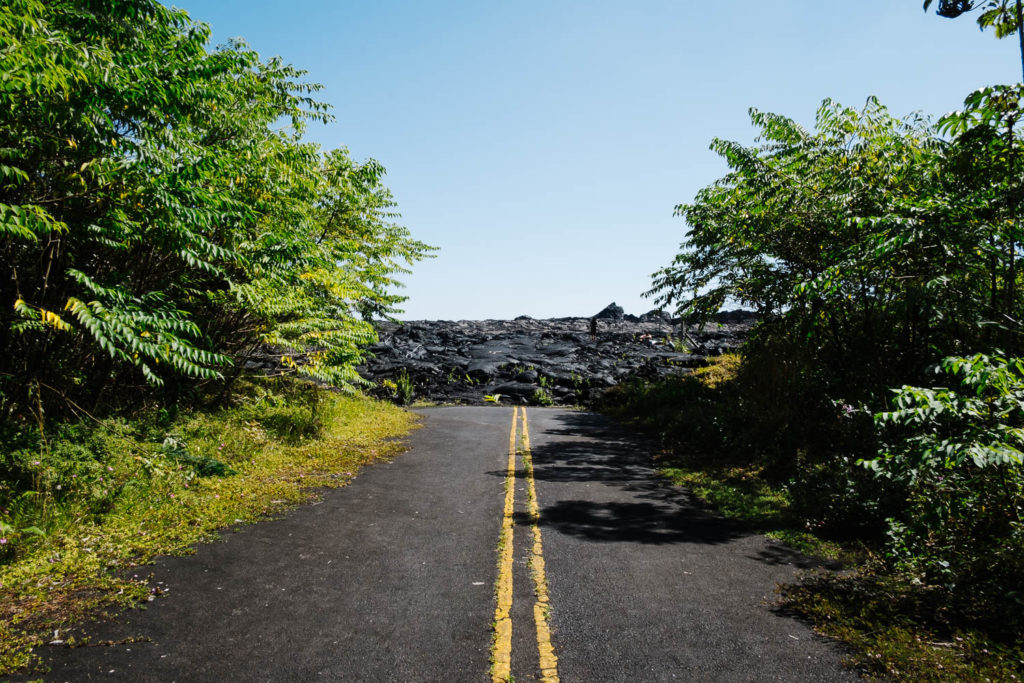
Fissure 8 in Leilani Estates
The second stop is in a quiet residential neighborhood, so please be respectful of locals if you visit. Don’t trespass on private property or walk past the barriers.
Navigate to Fissure 8 Viewing Area to see where the 2018 Kīlauea eruption destroyed dozens of homes, and the street abruptly stops, swallowed by lava. There appear to be locals offering tours of the fissure, but you don’t need to pay for a tour to stand on the street and view the lava flow.

Kalapana-Kapoho Rd
From Leilani Estates, continue down 130 to Kalapana (stop at Uncle Robert’s Awa Bar for food, smoothies and more). From Kalapana, you’ll take 137/ Kalapana-Kapoho Rd up the coast, where you’ll be rewarded with views of lava on either side of the road — which had to be reestablished and carved out of the cooled lava flow after Kīlauea’s 2018 eruption.
On your way up, you may want to stop at MacKenzie State Recreation Area, another spot where lava met the ocean. Views from the lava covered cliff are excellent, and there’s lava tubes in the forest.
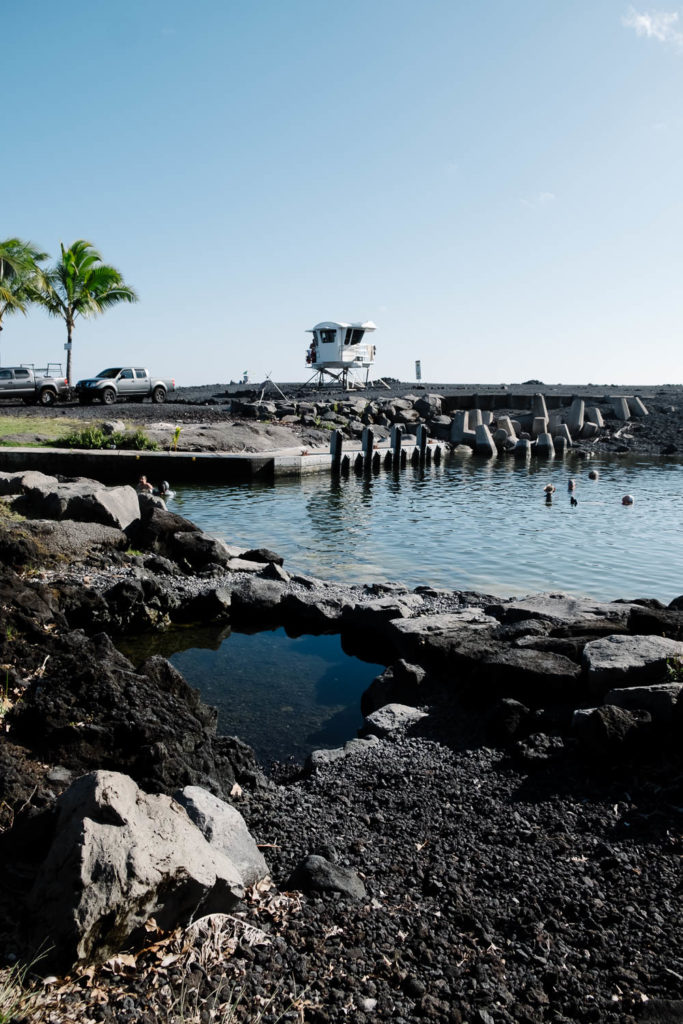
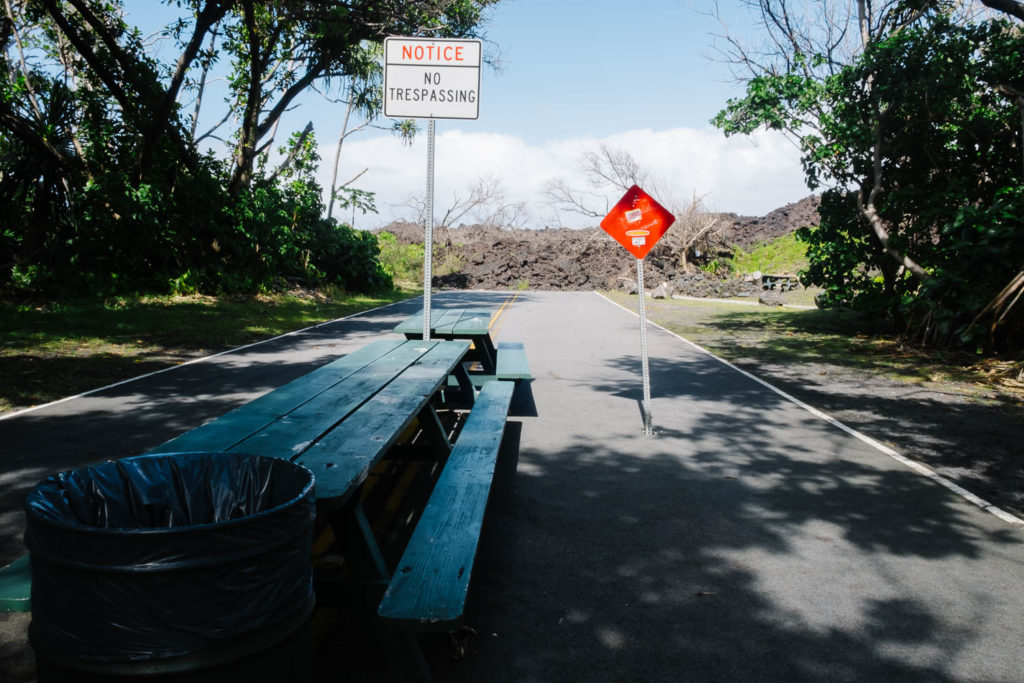
Isaac Hale Beach Park
Finally, stop at Isaac Hale Beach Park. You’re looking at a new black sand beach in the making, and a landscape drastically altered by lava flow, as evidenced by the boat ramp to nowhere.
This beach isn’t the best for swimming with all the volcanic rock, but you might want to take a dip in the thermal ponds created by the lava flow. And you’ll be able to gawk at the spot where the lava flow stopped after taking out the picnic and playground area of the park, blocking Pohoiki Rd.
Because Pohoiki Rd is currently blocked by lava (there are plans in the works to reestablish it), you’ll need to retrace your steps from here to get back up to Pahoa.
NOTE: If you’re exploring on a Sunday, be sure to make time for Pahoa’s excellent Maku’u Farmer’s Market. The market offers prepared foods in addition to the usual bounty of fruits and veggies, so it’s an excellent first stop in the morning if you’d like to fuel up or grab some picnic supplies to bring along.
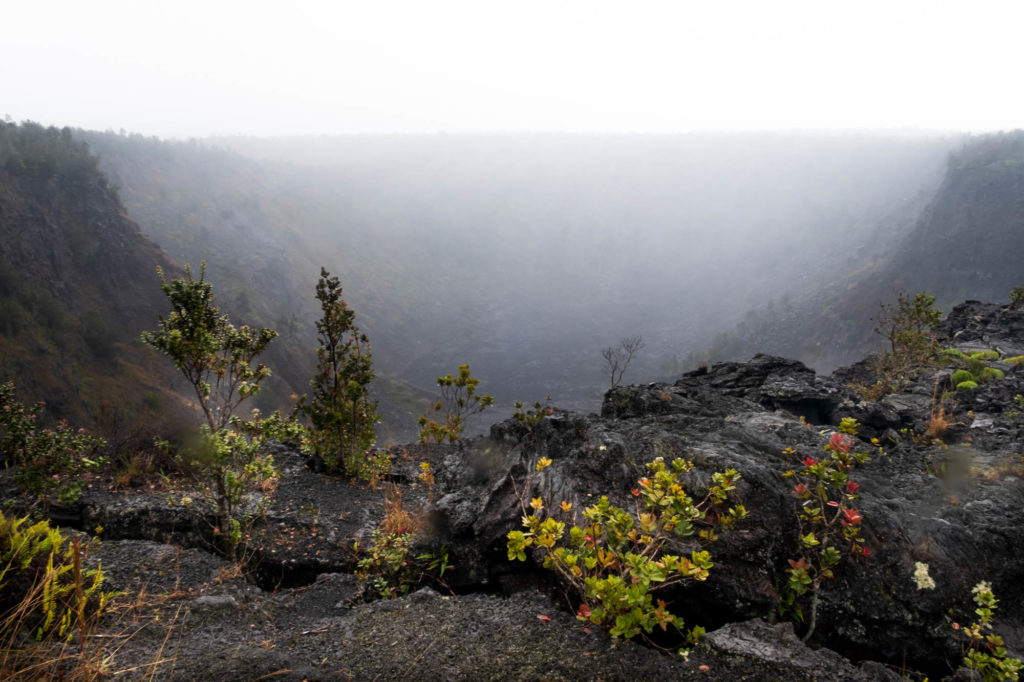
Hawaii Volcanoes National Park
Volcanoes National Park is a must-visit on the Big Island, with both lush foliage and otherworldly lava scorched landscapes to explore. (I previously wrote about what to do on a rainy day in the park, and it’s also a great place to see petroglyphs).
No surprise that a park built around a volcano is one the best places to see lava! From volcanic craters, to lava tubes, to wide expanses of lava creating a dark fairy tale landscape, we loved our time at the park. If hiking isn’t your thing, many attractions are accessible a short walk from parking, and the Chain of Craters Road Tour provides incredible views without ever leaving your car. Browse the Volcanoes Park website to see everything the park has to offer.
One neat fact that we wouldn’t have known without a local tip: when Kīlauea is erupting, the park will open for some evening sessions to allow visitors to view the glow of the lava–and during these evening hours admission is free! Because they understandably want to keep visitors out of harms way, you’re unlikely to get close enough to the molten lava to see much in the daytime. But the glow emanating from the crater at night is enough to make you believe in Pele.
Oh, and don’t leave without visiting the Volcano Art Center gift shop in the park. It’s chock full of fantastic local art and crafts and was one of the best gift shops we visited during nearly two months on the island!
Lava Flows in the Kona Area
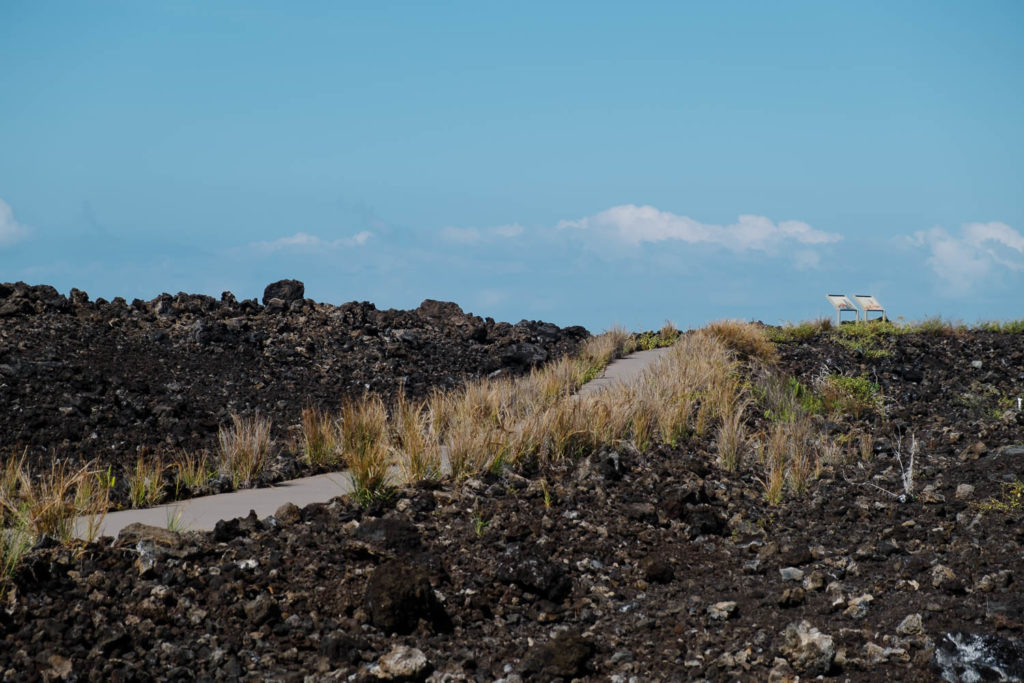
Kaloko-Honokōhau National Historical Park
Just north of the Kona airport, you can hike through old lava flows at Kaloko-Honokōhau National Historical Park. There’s far more to see than lava here, so take a look at the website or talk to the helpful rangers when you visit.
The unshaded lava fields can make for a very hot hike– be sure to bring water and wear sturdy shoes for the uneven terrain. The good news is that the two main trails lead to the beach! For a little less lava, but a shorter hike, take the trail to Honokohau Beach, a popular spot to view sea turtles.
Kaloko-Honokōhau National Historical Park does not charge for admission.
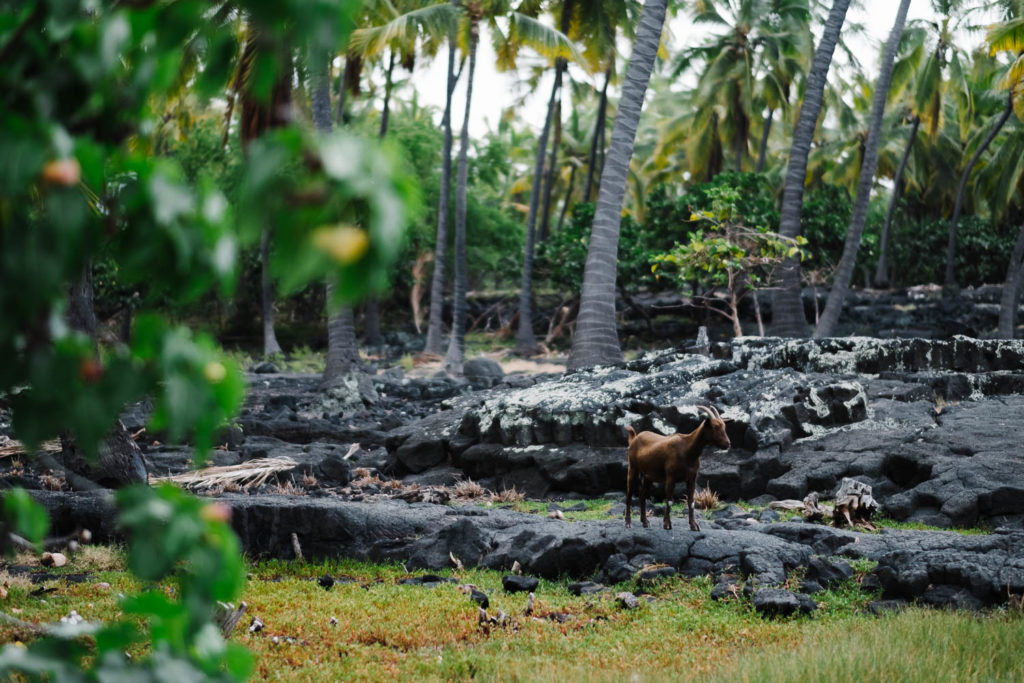
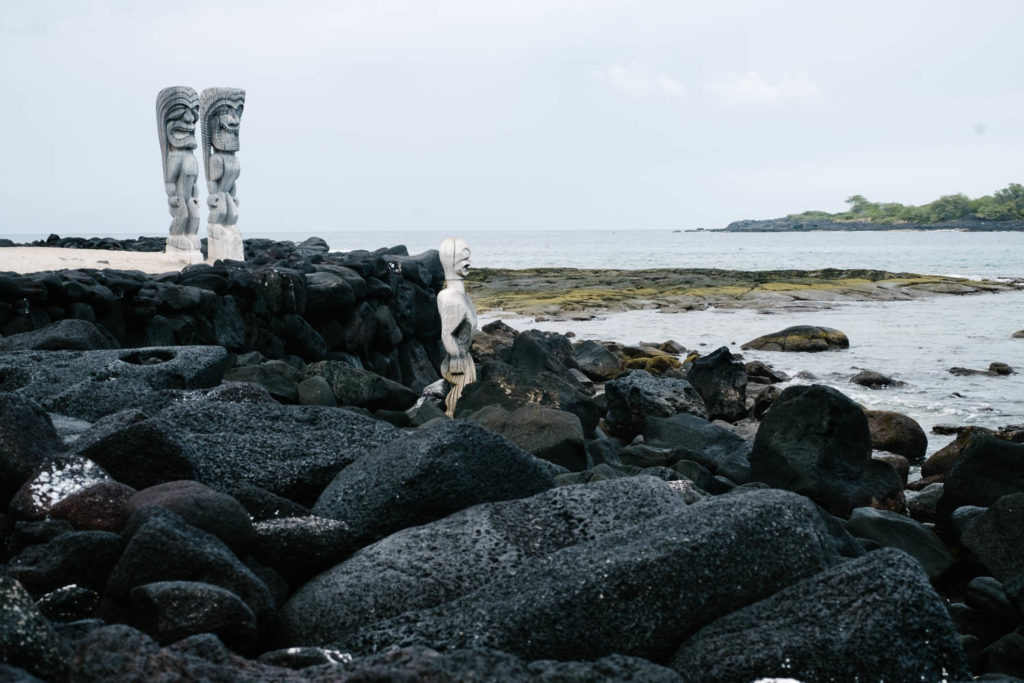
Pu’uhonua O Honaunau National Historical Park
Pu’uhonua O Honaunau National Historical Park lies on prehistoric lava flows of Mauna Loa volcano, about a half hour drive from Kailua-Kona. The park has something for nearly everyone. For maximum lava, hike along the gorgeous 1871 Trail that hugs the coastline and winds through lava fields. There’s also cultural demonstrations, reconstructions of traditional buildings, an oceanside picnic area, and resident goats!
Pu’uhonua O Honaunau National Historical Park does charge an admission fee. See their website for current info.
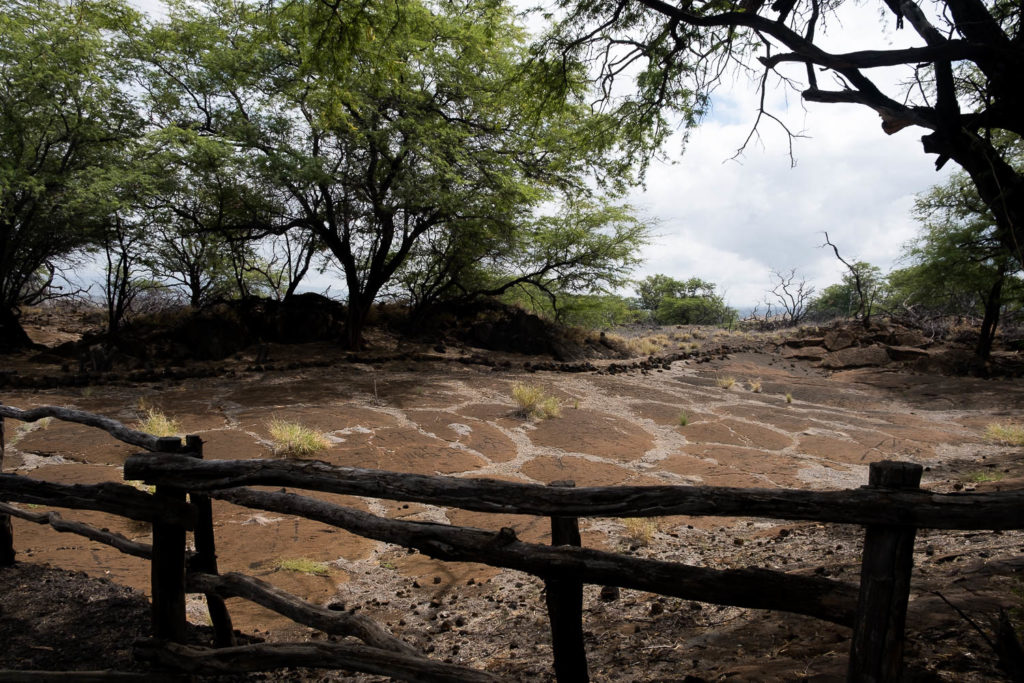
Puako Petroglyph Archaeological Preserve
For those staying in the Waikoloa area, the Puakō Petroglyph Archaeological District is only a short drive away. Trek through a spooky thorny Kiawe forest on the 1.2 mile hiking trail to a large petroglyph field full of fascinating carvings out of ancient lava rock.
The parking lot is shared with Holoholokai Beach Park, where the shore is lined with lava rock, and there are nice views up the coast to Waimea.
